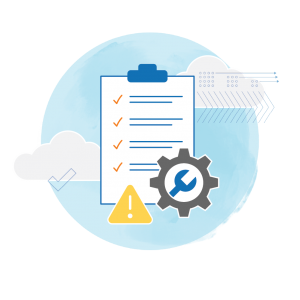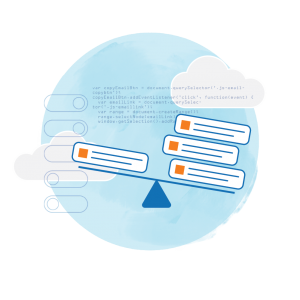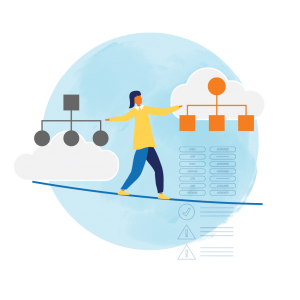
Launching a digital product is a huge accomplishment.
You and your team have spent months — often longer — researching, coding, designing, and testing. Now your digital baby is toddling off into the real world, ready to serve its first customers.
But launch is just the first step. For your digital baby to grow up and become a mature product, you’ve got to do more.
The key is investing post-launch resources in the right places. Successful digital products must invest resources in four distinct areas:
- Onboarding and adoption
- User support
- Engineering support
- Product management
Balancing limited resources among these four activities is the core strategy for digital product success. As you plan for post-launch success and the evolution of your software, here’s how to think through these four areas.
1. Onboarding and adoption
Once your software launches, you’ll want people to sign up and start using it. Getting users to try, use, and stick with your software is critical.

In 2019, analytics provider Localytics found that 25% of all users abandoned apps after opening them just once.

Only 32% of users stuck around long enough to open an app more than 10 times.¹
Of course, retention rates will vary depending on the type of software you’re launching and the target audience. But even if you’re serving a captive internal corporate audience, onboarding and adoption are still critical. These activities provide real-world insights about your users and their problems.
Remember that your digital baby will need to crawl before it can walk, and walk before it can run. Be prepared to invest time in manual onboarding activities. These might include:
- Data migration
- Setup configuration
- Unique organization or data structure
- Integrations
- Product training
High-touch activities — phone calls, screen shares, and even in-person visits — are often necessary. These might seem cumbersome and expensive, but they’re actually opportunities. Your onboarding team can dig in to better understand your customers and their problems.
As Y Combinator co-founder Paul Graham has said, “Do things that don’t scale.”² ConvertKit’s Nathan Barry is even more blunt about it: “Do the hard work that doesn’t scale.”³
When he launched ConvertKit into the crowded email marketing space, Barry would often have promising prospects tell him it was just too much work to migrate their existing email list to his service.
So, he would do the migration for them.
During these early stages, measure success in terms of value delivered, NOT how many hours the work takes. It’s time to learn about your customers and their problems, not worry about efficiency. Keep your focus on:
- Confirming customer goals.
- Defining product outcomes.
- Creating an action plan for your product.
Failing to invest in product management is one of the most expensive mistakes you can make.
2. User Support
User support is vital. If users can’t get their questions answered or have problems with the software, they won’t remain users for long. But it’s still just one of the four post-launch areas of focus. How much should you invest — in dollars and people — in this?
Here are some questions to consider as you’re deciding what resources you should put into user support:

Software complexity. The more complex the software, the more support users will require. Complexity in the user interface (UI), complexity in the data model, complexity in the business domain and business logic, and complexity in integrations with other applications. The more complexity there is — in any or all of these areas — the more resources you’ll need to devote to user support.

User sophistication. More sophisticated users are likely to require less support to use the product (though they may have more sophisticated questions). Less sophisticated users are likely to require more hand-holding in the basics of using the product.

SLAs for users. Are you offering service level agreements for users? If so, consider the implications for support resources. Does your support team have the training and capacity to meet those SLAs? Will you need to provide support outside of normal business hours? Does your product serve users in different time zones (especially globally) and in different languages? If so, will you have adequate resources teed up to serve all those customers?

Investment in support technology. Appropriate support technology — help desk software, live chat, a searchable knowledge base that users can access themselves — requires investment. What level of support are you promising and what tools and resources do you need to provide that support?

User support content. Finally, how much user support content — FAQs, instructional articles and the like — will you launch with? At what pace will you add more? You should plan to start small and then add content steadily over time, based on the questions you hear from users.
3. Engineering Support
While the first two areas — adoption and onboarding, and user support — are focused on your customers, engineering support is focused on maintaining and improving your software.

No digital product launches in a perfect state from day one. And even if it did, competing products would soon outstrip it in features and performance. Your engineering team will have ongoing work to do.
Engineering support includes:
- Bugs and troubleshooting
- Changes to existing features
- New features
- Dev ops
Engineers often face multiple, and sometimes conflicting, objectives. Users and the support team are providing bug reports. The customer success manager may be finding that existing features need to be changed. And there’s always someone (or several people) with ideas for new features and improvements.
Balancing these demands within constrained engineering resources can be tough. Striking the right balance requires two things.

First, collaboration between every team involved in building the product. Different teams have different jobs, but they cannot work in silos. They need to be able to communicate with each other and coordinate their work. This means active project management, all-hands communications from key leaders, and a systematic way for everyone to share what they’ve been doing.
Second, prioritization. Different teams have different streams of work, all of which may put different demands on engineering. Bucketing that work (urgent, active, backlog) and making sure it’s aligned will make your engineers more effective. Perhaps the biggest challenge is balancing current priorities (perhaps for new features) with urgent problems (like a persistent bug users complain about).
4. Product Management
Product managers need to understand both sides of the value proposition coin: What your customers want and the strategic business drivers.

On the customer side, product managers must differentiate between the solution (the software) and the problem you’re solving (the customer’s goal). Your team can build the best software ever, but if it doesn’t address real customer needs it won’t be successful. Product managers need to think about questions like, “Of this list of potential new features, which are at the heart of solving the customer’s problem?”
Product managers should work closely with the onboarding and adoption team, as that’s where new insights on customer needs are likely to be discovered. In fact, in small teams the product manager and the customer success manager might be the same person.
On the business strategy side, product managers must also ensure the software delivers on key objectives. If the software doesn’t meet the needs of the business, it won’t get the resources it needs.
The product manager is always walking this tightrope, balancing customer needs and business objectives. That balancing act is formalized in product roadmaps and plans. The product manager ensures resources are focused on the right activities.
Failing to invest in product management is one of the most expensive mistakes you can make.
Moving Toward Maturity
Planning for the first 12-24 months after launch is one of the most important steps you can take to ensure long-term success for your software. It takes time to develop a digital product to the point where it’s in maintenance mode — probably longer than you think.
Investing in these four post-launch activities is the critical first step in helping your digital baby grow up.
Wondering how to measure success for your digital product? Enter your email below and we’ll send you a link to a webinar plus slides that this blog post is based on. It includes additional insights on measuring success for your software and more.
Marty Balkema is the co-founder, COO and director of customer success at LOFT. He has 25 years of software development and product management experience in manufacturing firms, enterprise software and B2B applications.
References
1. http://info.localytics.com/blog/25-of-users-abandon-apps-after-one-use
2. http://paulgraham.com/ds.html
3. https://nathanbarry.com/15-lessons-15-million